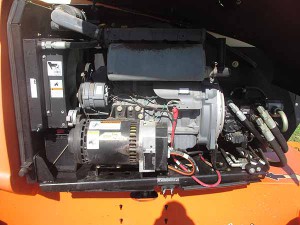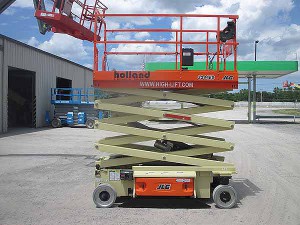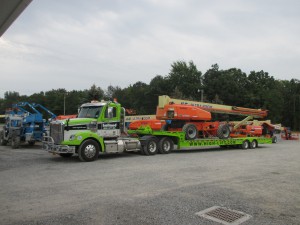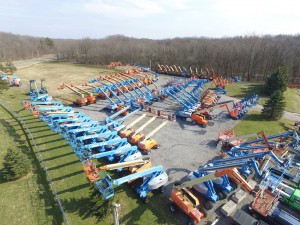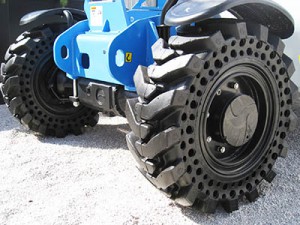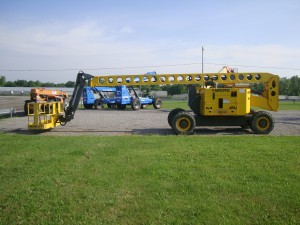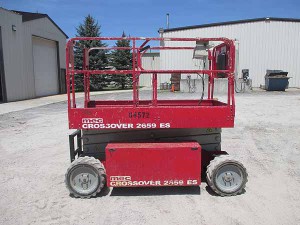If you’re in an area that gets cold in the winter there are some challenges to owning and using a boom lift in the colder months. There are things that you can do to make your life easier and lessen the chance of damaging your lift.
Most boom lifts have air cooled Deutz engines. While they usually have glow plugs to aid starting in very cold weather a block heater would be a big help. Unfortunately with an air cooled engine block heaters aren’t an option. Fortunately both oil pan and dipstick heaters exist and while they aren’t quite as effective as a block heater they will help in all but the coldest conditions.
An engine heater will aid in starting but it doesn’t help heat up the hydraulic systems. A common misunderstanding is that letting a lift run at idle will warm up the hydraulics but unfortunately this isn’t true. The hydraulic oil only circulates when you’re actually doing a function. Some lifts came from the factory with a cold weather kit that included a hydraulic tank heating blanket. This at least helps warm the oil in the hydraulic tank itself. The tank heaters certainly help but it’s not a perfect solution because a lot of oil isn’t in the hydraulic tank but rather in the cylinders, valves, and hoses that make the lift work. There’s no way to warm up this oil besides putting the lift inside a heated building or running the machine.
If you live in a climate that’s cold year round arctic/cold weather hydraulic oil is available. This oil is thinner and designed for winter use. The reason it’s not a good solution in most places is during the warm summer months the hydraulics tend to get too warm, the oil too thin, and the whole system slows until the oil cools back off and things return to normal.
Once the lift is running the biggest concern relates to seals and o-rings. Cold hydraulic oil is thick and it is harder to pump through cylinders, rotators, and hoses. Oftentimes the weak link is a seal or o-ring. The most common issue we’ve seen is with the seals in the basket rotator. The rotator is very far from the hydraulic pump and because the rotator isn’t used very often the oil there really has no chance to warm up. What happens is the seals in the rotator get pushed out of place by the thick cold oil causing a leak. Those seals have a much higher failure rate in cold weather. There is no good solution to this issue. Fortunately most of the time it’s possible to just not use that rotator. It’s a convenience to be able to straighten the basket against a building but many times it can be worked around. Not rotating that basket on that one very cold day could save you a repair bill.
There’s no way around the fact that cold weather isn’t great for your lift but hopefully this information will help you keep going until the Spring arrives.
